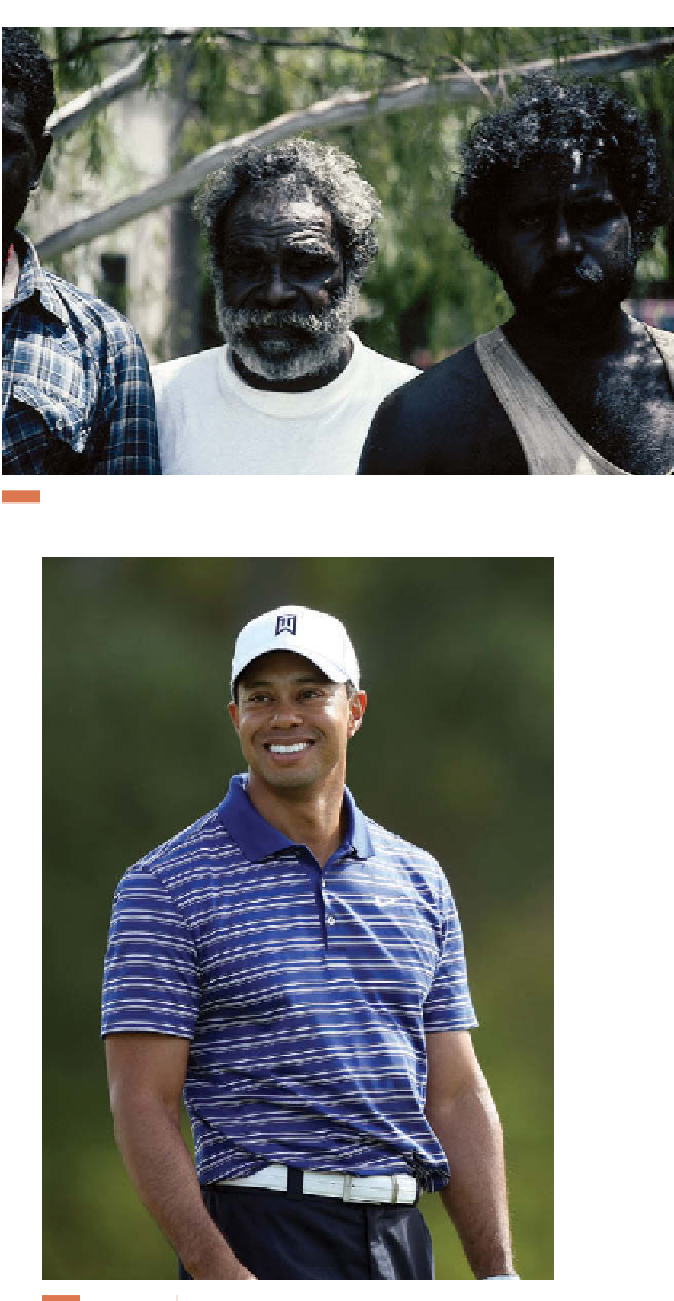Geography Reference
In-Depth Information
Field Note
“We were traveling in Darwin, Australia, in 1994 and
decided to walk away from the modern downtown for
a few hours. Darwin is a multicultural city in the midst
of a region of Australia that is largely populated by
Aboriginals. At the bus stops on the outskirts of the
city, Aboriginals reached Darwin to work in the city or
to obtain social services only offered in the city. With a
language barrier between us, we used hand gestures to
ask the man in the white shirt and his son if we could take
their picture. Gesturing back to us, they agreed to the
picture. Our continued attempts at sign language soon
led to much laughter among the people waiting for the
next bus.”
Figure 5.3
Darwin, Australia.
© H. J. de Blij
of class placement, in which members of the wealthy upper
class are generally considered as “white,” members of the
middle class as mixed race or Mestizo, and members of the
lower class as “black.” Indeed, because racial classifi cations
are based on class standing and physical appearance rather
than ancestry, “the designation of one's racial identity need
not be the same as that of the parents, and siblings are often
classifi ed differently than one another.”
In each of these cases, and in countless others, peo-
ple have constructed racial categories to justify power,
economic exploitation, and cultural oppression.
Race and Ethnicity in the United States
Unlike a local culture or ethnicity to which we may
choose
to belong, race is an identity that is more often
assigned
.
In the words, once again, of Benjamin Forest: “In many
respects, racial identity is not a self-consciously con-
structed collection of characteristics, but a condition
which is imposed by a set of external social and histori-
cal constraints.” In the United States, racial categories
are reinforced through residential segregation, racialized
divisions of labor, and the categories of races recorded by
the United States Census Bureau and other government
and nongovernmental agencies.
Defi nitions of races in the United States histori-
cally focused on dividing the country into “white” and
“nonwhite,” but how these categories are understood has
changed over time (Figure 5.4). For example, when immi-
gration to the United States shifted from northern and
western Europe to southern and eastern Europe in the
early twentieth century, the United States government
Figure 5.4
Tiger Woods.
When Tiger Woods emerged as a serious con-
tender in the golf circuit in the 1990s, the media was uncertain
in which race “box” he fi t. In response, Woods defi ned himself
as a Cablinasian for Caucasian, Black, American Indian, and
Asian.
© Donald Miralle/Getty Images.










































